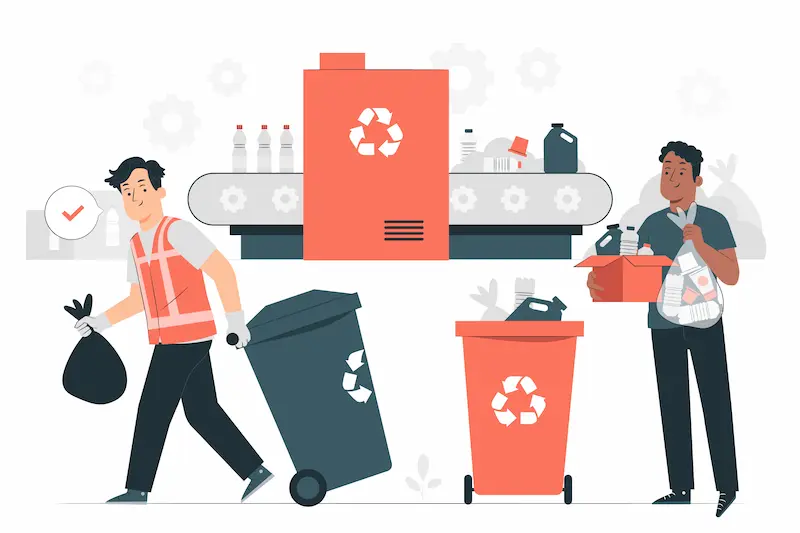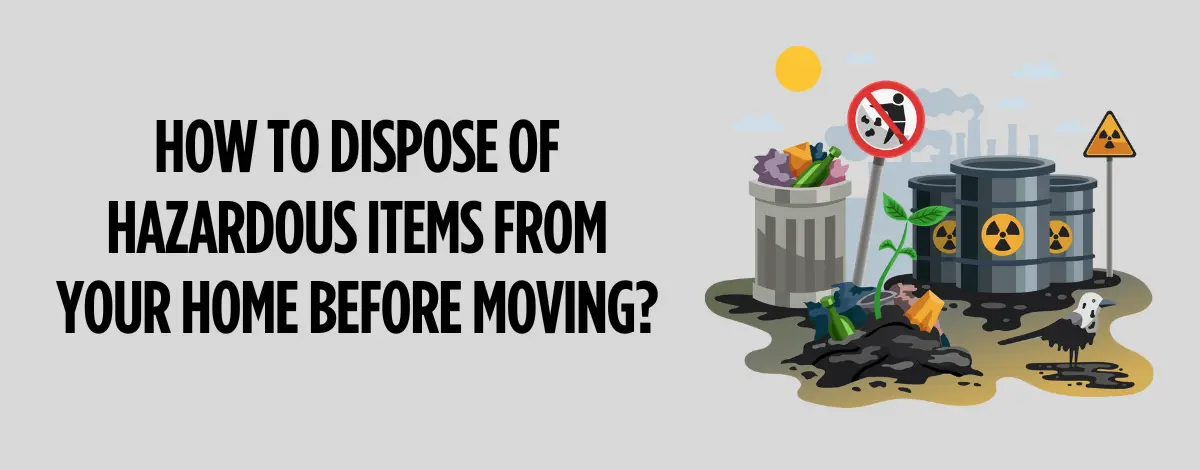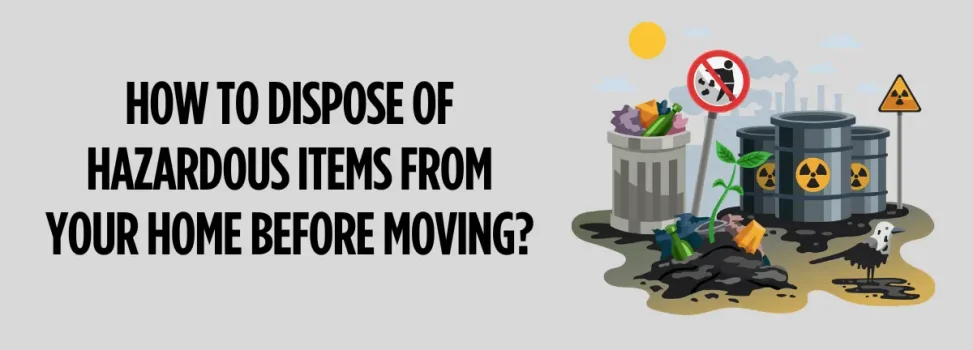There are certain items that movers won’t take with you when you move. The number of household items that your moving company may reject because they are unsafe may surprise you.
It’s a thrilling experience to move to a new house, but before you pack up and shift, make sure that you should dispose of hazardous items properly.
We’ll talk about typical household hazardous items in this blog post, along with appropriate disposal procedures.
Typical Dangerous Items in Our Houses:
Let’s first list the typical hazardous items that are present in most homes before talking about the disposal procedures:
Paints and solvents:
These might include dangerous substances like lead and volatile organic compounds (VOCs), that, when improperly got rid of, may negatively impact the surroundings and create breathing issues.
Pesticides and insecticides:
Although these substances are meant to destroy pests, if swallowed or breathed in, they may also be dangerous to people and animals.
Batteries:
Damaged or outdated batteries have the potential to leak dangerous substances like acid and lead, which may pollute the ground and water sources.
Cleaning products:
Numerous cleaning products for the home are on the market using chemicals that may be harmful to both the natural world and human beings.
Electronics:
Dangerous elements such as lead, mercury, and cadmium can be found in old and malfunctioning electronic gadgets, including televisions, personal computers, and cell phones.
Fluorescent bulbs:
Mercury can be hazardous if it is leaked into the atmosphere, and these fluorescent light bulbs have trace levels of mercury.
Automotive products:
Automotive fluids such as oil, antifreeze, and others can be hazardous, so you must never dispose of them in the garbage or down the drain.
Procedure to Dispose Hazardous Items:

1. Determine and arrange hazardous items separately:
Sort all of the potentially dangerous items in your house into one location. Make sure to look through your attic, the yard, and other spare rooms for any neglected objects. To facilitate disposal, divide the hazardous items into categories such as paints, batteries, and insecticides.
2. Verify local laws and disposal choices:
Check your local laws and choices for disposal before discarding any hazardous items. There are facilities and special rules for disposing of hazardous trash in several towns and neighborhoods. To learn more about your alternatives for disposing of dangerous materials, get in touch with the nearby waste management organization or check out their website.
3. Utilize or give away reusable items:
Think about utilizing up any dangerous items you may still have before shifting, including paint or cleaning supplies. As a substitute, you may give these things away to peers, friends, or neighborhood charities that could find use for them.
4. Hazardous item disposal at approved facilities:
Deliver your dangerous waste to the locations that have been approved for disposal in your community. The purpose of these facilities is to safely manage hazardous waste and avoid contaminating the natural world around them. Make sure you adhere to the facility’s instructions for the correct disposal.
5. Battery and electronic recycling:
Rather than being thrown away, a lot of devices and batteries can be recycled. Seek out recycling initiatives or drop-off locations in your area that take these materials. A few makers and dealers of electronics also provide older items with take-back schemes.
6. How to get rid of fluorescent bulbs securely:
It is important to approach fluorescent bulbs cautiously to prevent shattering and mercury leakage. Seek out nearby recycling initiatives or establishments that will take these lightbulbs for secure disposal. Additionally, several hardware stores provide fluorescent bulb take-back schemes.
7. How to effectively discard automotive items:
It is never appropriate to dispose of automotive fluids in the garbage or down the drain. However, deliver them to a recognized disposal site that takes these products or an auto repair business. Utilized motor oil and other vehicle fluids can be recycled through several auto parts outlets.
Additional guidance on getting rid of hazardous items:
1. Maintain the items in the original packing. Always be cautious and keep specific hazardous products in their original packaging. Some hazardous compounds become more dangerous when released into the air or when placed in a different kind of container.
2. Don’t combine goods. When two dangerous compounds come into contact with one another, you never understand what may occur. Never mix two or more risky elements in any way; always apply the utmost decision.
3. Use caution when handling even vacant containers. Even when the item has been removed from a container, the residual chemicals within the container may still be dangerous. Hazardous waste containers that are unfilled must be disposed of with the same care as if they contained material.
Tips:
It is very easy to switch out many dangerous household cleansers with non-toxic ones or even just with baking soda, vinegar, and mild dish soap. All risky materials have less harmful alternatives, but some can be replaced with better alternatives without compromising on quality.
Hazardous substance disposal should begin as soon as possible because things could take some time to sort out. In addition, be sure to properly carry any items to your new house and discard them there if you are unable to get rid of them all before moving.
Not only is it environmentally and family-friendly to properly dispose of hazardous items before moving, but it also expedites and streamlines the act of shifting as much safety and environmental consideration as possible can be put into your move by following the instructions provided in this post.
You’ll be safeguarding the natural world and leading, for instance, for others in your local area if you take the necessary steps to dispose of hazardous waste correctly. Recall that everyone has a responsibility to safeguard the surroundings and ensure a sustainable future. Whenever moving, safely discard any hazardous items, and you’re making a big step toward a more secure, sustainable, and fresh earth.
FAQs
It is your responsibility to secure your surroundings, people, and the whole earth. By properly disposing of hazardous items before you move, you can secure your atmosphere.
No, it is not advisable to dispose of mixed hazardous items together because this combination of two or more hazardous items’ disposal may harm you and your surroundings.
No, it is not safe to handle an empty container that once held hazardous items because sometimes there is a chance of occurring hazardous items even after the container becomes empty.
Yes, there are many eco-friendly alternatives to hazardous household items, for example, you can use baking soda, vinegar, and mild dish soap.
Be sure to properly carry any items to your new house and discard them there if you are unable to get rid of them all before moving.


